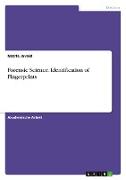- Start
- Forensic Science. Identification of Fingerprints
Forensic Science. Identification of Fingerprints
Angebote / Angebote:
Akademische Arbeit aus dem Fachbereich Medizin - Anatomie, Physiologie, Cytologie, , Sprache: Deutsch, Abstract: Fingerprints, as unique and intricate identifiers, have played a pivotal role in the realms of both civil and criminal identification. This practice, known as dermatoglyphics, explores the distinct features formed by the intricate patterns of epidermal ridges on the fingers. The uniqueness of fingerprints arises from the complex interplay of multiple genes and their additive effects, making them invaluable for studying the fundamental relationships among diverse populations.
The term "fingerprint" typically refers to the impression of epidermal ridges left by the fleshy distal portion of a finger on a surface, serving as a reliable means of establishing identity. These impressions, often left behind due to contact with surfaces, contain components originating from skin glands, such as lipids, amino acids, proteins, and exogenous elements like debris and cosmetics.
Fingerprints have served as a biometric tool for computer-aided personal identification, making them the oldest mode of such identification. The distinct ridges and valleys on fingerprints form patterns that are compared for matching, but the analysis poses analytical challenges due to the complex and multifaceted nature of fingermark residue.
This paper delves into the composition of fingermarks, the factors affecting their variability, and the impact of conditions like personal hygiene, diet, and the nature of the substrate on fingerprint composition. Additionally, it addresses circumstances and medical conditions that can alter or destroy fingerprints, emphasizing the dynamic nature of fingerprint analysis.
Folgt in ca. 10 Arbeitstagen
